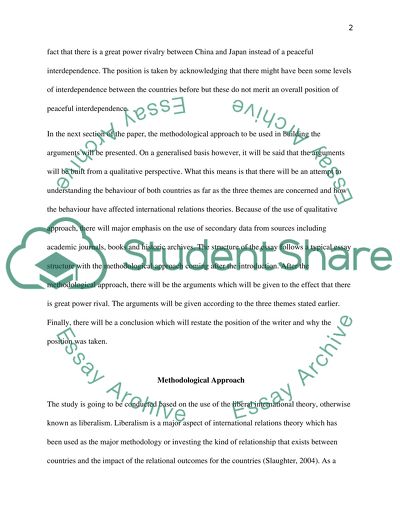Cite this document
(“China-Japan Relations In East Asia: Great Power Rivalry Or Peaceful Essay”, n.d.)
China-Japan Relations In East Asia: Great Power Rivalry Or Peaceful Essay. Retrieved from https://studentshare.org/social-science/1673078-china-japan-relations-in-east-asia-great-power-rivalry-or-peaceful-interdependence
China-Japan Relations In East Asia: Great Power Rivalry Or Peaceful Essay. Retrieved from https://studentshare.org/social-science/1673078-china-japan-relations-in-east-asia-great-power-rivalry-or-peaceful-interdependence
(China-Japan Relations In East Asia: Great Power Rivalry Or Peaceful Essay)
China-Japan Relations In East Asia: Great Power Rivalry Or Peaceful Essay. https://studentshare.org/social-science/1673078-china-japan-relations-in-east-asia-great-power-rivalry-or-peaceful-interdependence.
China-Japan Relations In East Asia: Great Power Rivalry Or Peaceful Essay. https://studentshare.org/social-science/1673078-china-japan-relations-in-east-asia-great-power-rivalry-or-peaceful-interdependence.
“China-Japan Relations In East Asia: Great Power Rivalry Or Peaceful Essay”, n.d. https://studentshare.org/social-science/1673078-china-japan-relations-in-east-asia-great-power-rivalry-or-peaceful-interdependence.


